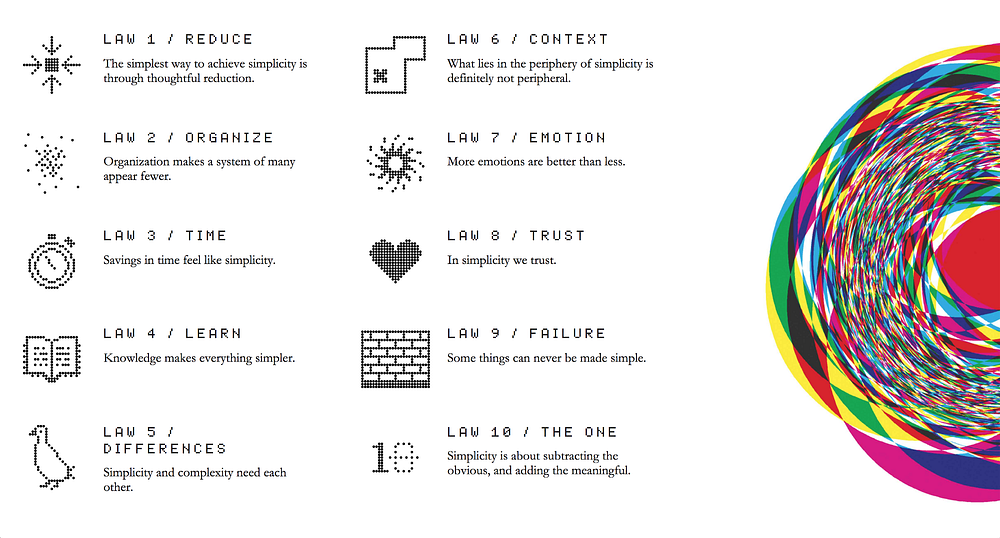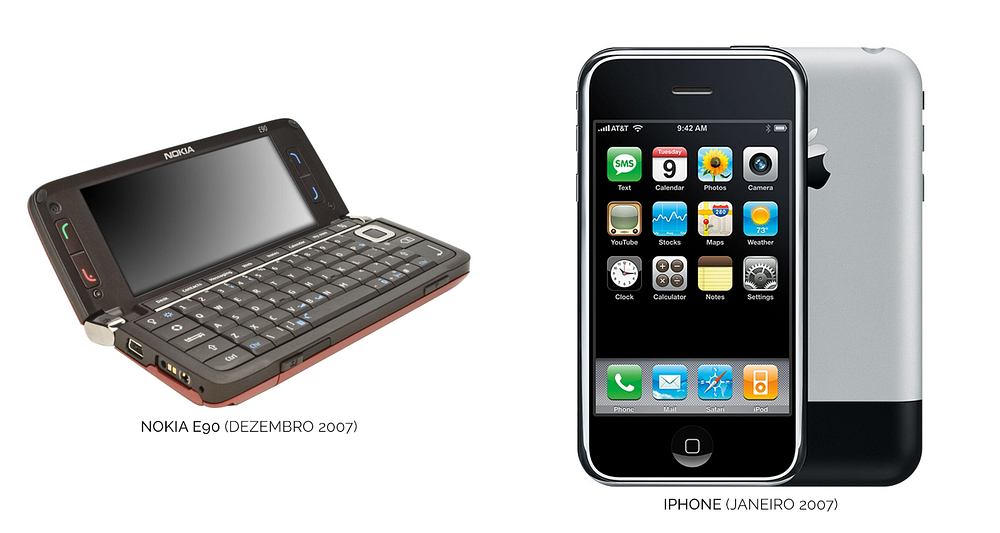The laws of simplicity
Basis of the design process to avoid wasted time and rework
Improvisation is one of the foundations of jazz and to improvise is necessary repertoire, technics and creativity. In practice, this is so difficult that sometimes you choose linearity. When you improvise and all the attention turns to you, simplicity sets you free to create without fearing the judgment of others.

The Laws of Simplicity (LOS), written by John Maeda, was released in 2006, the same year my wish of working with advertising came true. It didn’t take long for me to learn that there was no time to run after procedures and expectation — especially over designers — it was too high; creativity and quality in the execution were the accepted criteria for everything that was done. There was no room to make a mistake, and that made me panic. In this context LOS taught me to approach each task with the tranquility and security necessary to develop creativity and optimize design, dedicating maximum of time to the execution.
In music, especially when studying percussion and drums, rudiments are the basis of everything that is played. I like to approach The Laws of Simplicity as rudiments of design, which over practice, they enable you to perform complex tasks like Art Blakey plays bebop. The musician doesn’t stop and think what rudiment one will apply at the moment of a fill, the mastery of the rudiments makes the execution natural and fluid.

The User Experience discipline, especially in internet projects, has been experiencing a moment of effervescence. In this context, LOS helps you avoid losing focus in so many novelties, select only what is good and make it clear to see the design process as a whole where the goal is to provide good experiences.
LOS helps you communicate better with the people involved in a project when it comes to defining what will be done, or a step before when the client comes to you with a problem, brings a lot of ideas and it is necessary to spend time to understand the problem before proposing the solution.
Design process involves many more people besides the team of UX, and LOS democratizes the process and gives protagonism for other professionals to add in the project.

That’s been one of my mantras — focus and simplicity. Simple can be harder than complex: You have to work hard to get your thinking clean to make it simple. But it’s worth it in the end because once you get there, you can move mountains. Steve Jobs
The best solutions are the simplest, but the path of simplicity is arduous, so master the laws of simplicity — or the rudiments, if you prefer — and improve constantly.

